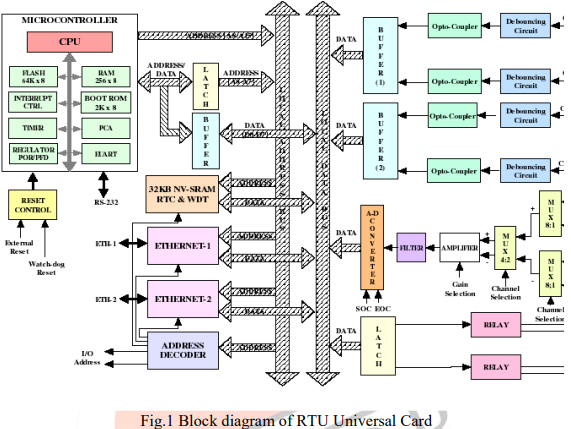
I. INTRODUCTION
Nuclear electricity in India is presently from Pressurized Heavy Water Reactors (PHWRs). Presently 15 reactors are operating, and 8 more are under construction. With 250 reactor-years of operating experience, India is one of the advanced countries in nuclear energy. PHWRs will saturate at about 10 GWe. In order to satisfy the energy requirements, with fuel derived from internal resources, it is possible to build FBRs with energy capacity. It is estimated that, indigenous Fast Breeder Reactors (FBRs) will contribute 200 GWe by 2052. This will account for about 16 % of total energy production in at that time.
A nuclear reactor and process control systems consists of various continuous process signals from the various sensors and transmitters placed at different locations in the field including hazardous area. The accurate measurement of these process parameters are very important in order to carry out control operation properly. This is because in high voltage transmission systems, fault levels are generally high, which if not cleared rapidly, can cause system instability as well as extensive damage and hazards to personnel. Speed of operation, selectivity, reliability and security of the trip decision assume more importance at higher operating voltages as they handle bulk of power. Hence this laid to the foundation for testing of different parameters or signals coming from the reactor/field.
II. REMOTE TERMINAL UNIT (RTU)
Remote terminal unit is one of the independent safety related system of PFBR. Nearly 20,000 signals from the plant are processed, stored & analyzed on this computer system thus enabling the operators and designers to access the plant data in any permutation and combination. The Reactors in the world are protected by automatic shutdown systems which become effective upon irregularities in plant operating conditions. The success of FBR can be attributed to the robust design & manufacturing practises, excellence in quality and overall, efficient personnel qualification through systematic training and reliable predictive condition management practises. The construction and working of microcontroller based RTU-Universal module is a data acquisition PFBR cards are helpful for accurate measurement.
III. RTU-UNIVERSAL CARD
RTU-UNIVERSAL CARD is one of the most important modules in the Remote Terminal Unit (RTU). These modules are located near the Reactor Systems and can be communicated with control block through Ethernet cables. This module has got 16 channels for Digital Inputs, 8 channels for analog inputs and 8 channels for Relay Outputs. The RTU gets the digital inputs and analog inputs from the field signals and are processed using AT89C51RD2 Micro-controller which is inbuilt in the module.
IV.SYSTEM DESCRIPTION
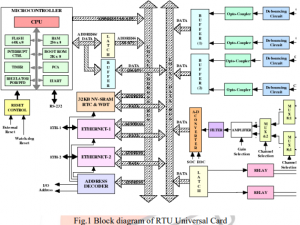
A) AT89C51RD2 MICROCONTROLLER
B) DS 1554 Real Time Clock IC
C) NM 7010B + REV-1.0 ETHERNET MODULE IC
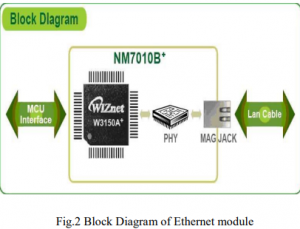
D) MAX 232A – RS232 DRIVER/RECIEVER
V.HARDWARE DESCRIPTION
A) TEST PROCEDURE
B) EQUIPMENT REQUIRED
RTU boards along with Back plane
DC Power Supply of 5V@50A
Analog Voltage Source (0-10VDC)
Field interrogation voltage of 24VDC @1.6A for Digital Inputs
Decade Resistance Box
One RS 232 cable
PC with OS
FLIP GUI software from ATMEL
Keil „C‟ Cross Compiler for software development
I/O simulator for 16 Channel 16Channel DI-RO Board
VI.SOFTWARE DIAGNOSTIC
A) EMBEDDED C
B) KEIL’S SOFTWARE
VII.SIMULATION RESULTS
A) RS232 Communication Test:
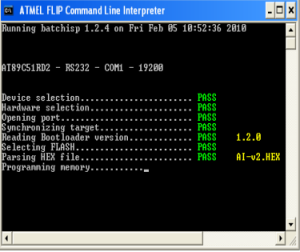
B) MEMORY AND RTC TEST:
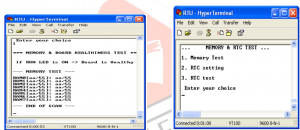

C) DIGITAL INPUT TEST:
D) ANALOG INPUT TEST:
E) RELAY OUTPUT TEST:
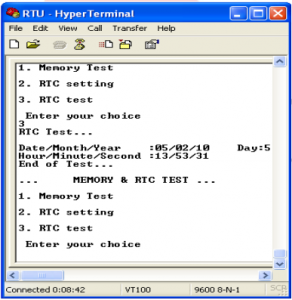
VIII.CONCLUSION
RTU universal card is designed and the development of diagnostic software for UNIV-RTU has been successfully completed and various features of the board also been tested. The test software works in both manual and auto mode. In auto mode the error detection logic has been implemented for memory, DI, RO and AI test. This enable us to easily find the bit error/channel error if any. The program can further be improved to implement the diagnostic features for LAN and the test software can be downloaded to target to test LAN connectivity. This will help immensely towards transmitting and receiving packets of information via LAN and can provide data communication to/from other data acquisition and control systems in the plant.

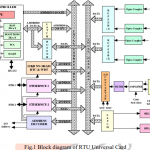
COMMENTS